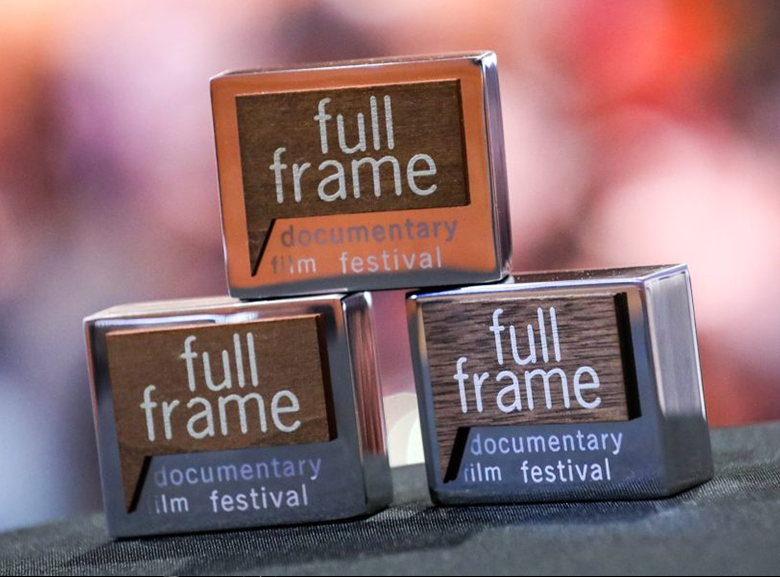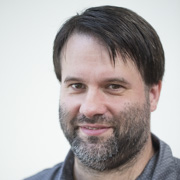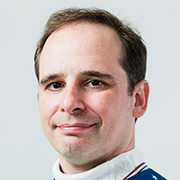The highly anticipated 2019 Full Frame Documentary Film Festival in Durham has come and passed, but have no fear, DesignHammer is here to catch you up with what you missed out on! Having built the Full Frame Documentary Festival website back in 2016 [see case study], and working diligently with the Full Frame team to keep their site performance up year-round, we were recognized as "Contributor Level Sponsors" for the 2019 festival; and as a result were given a very generous amount of tickets to share with our clients, partners, friends, and families! Naturally, there were four DesignHammer staff members that happily took advantage of the opportunity to miss a little bit of work to see 2-4 free films, explore the iconic Durham food scene, and play amateur film critic for a day or two.
We know you're probably kicking yourself for missing the opportunity to grab dinner and a movie (pro bono) with our team, but no worries there's always next year! Now, go ahead and check out what our team had to say about their favorite films, and if you like what you read–be sure to reach out to us about attending the 2020 festival with us!

Image Source: Indie Wire
American Factory
Summary:
In 2009, Steven Bognar and Julia Reichert released The Last Truck: Closing of a GM Plant to which followed the last vehicle to be produced as General Motors closed its plant in Dayton, OH in 2008.
In American Factory, Bognar and Reichert continue the story of the plant, its former workers, Dayton, and American manufacturing as Fuyao, a Chinese automobile glass manufacturer, reopens the former GM plant and staffs it with both American and Chinese workers.
Bognar and Reichert used their full access and editorial control to capture the perspectives of American and Chinese management and workers and to contrast their motivations and perspectives. With this level of access, it would have been simple for the filmmakers to present heroes and villains, but Bognar and Reichert were careful to let each person tell their own story in their own words, leaving the audience to draw their own conclusions about the costs, benefits, and perils of manufacturing, organized labor, work-life balance, and cross-cultural communication.
Rating: 5/5 Stars
Stephen Pashby: Account Manager
RBG
Summary:
RBG is the story of the life and career of Ruth Bader Ginsburg, the second woman to be appointed to the United States Supreme Court.
To be blunt, I’m not much of a fan of documentaries. For factual information, I typically prefer to read, as I can read much faster than people talk. Also, it allows me to follow up on parts that I find interesting, rather than follow the path the film maker has put in front of me.
That being said, I very much enjoyed this trip through RBG’s early years, her time at college, her life with her family, and her career. I was aware of her reputation as a liberal justice on the court; I didn’t understand how much of that was a result of the shift of the court, or know much about her career beforehand (which was fascinating), and I knew nothing about her life with her family. The support of her husband and their relationship was especially touching, as even today it is too rare that a husband so easily alters his own career goals to support his wife. And as was the case in their social interactions, I often found Martin to the the star of the show with his wit and charm.
But this insight into the life of the ‘Notorious RBG,’ filled with commentary from a wide range of luminaries, family members, classmates, researchers, and fans from a wide breadth of political perspective, really was a touching and enjoyable 99 minutes. I’m glad I let my wife talk me into it (for the record, I’m also the charming one).
Rating: 5/5 Stars
Michael Nicholson: Project Manager
Human Nature
Summary:
Considering that this was the first Full Frame Documentary Film Festival I’ve ever attended, I went in with very few expectations. I watched four films in total over the span of two days, but none of the films struck me quite like the documentary “Human Nature” did. Directed by Adam Bolt, Human Nature was a brilliantly produced educational exploration of the gene editing process via CRISPR (clustered regularly interspaced short palindromic repeats). What made this documentary so well-made was how much effort was put into making sure the audience truly understands the basics of biomolecular engineering, as well as the scientific advancements over time of our understanding of human genetics–before the film even introduces the concept of CRISPR. The producers were extremely mindful of the educational aspect, to such a degree that the film is designed so that even viewers whose careers are far removed from medical sciences, should be able to piece together random facts from their 8th grade biology classes (like the role of DNA and RNA in human genetics) and with the help of the film’s comprehensive 3D digital animations of how DNA operates at a molecular level, viewers should be able to follow the scientific concepts throughout the film with ease.
After catching the audience up on the state of biomedical engineering practice (this takes half of the entire film), the documentary explains how scientists discovered “Cas9” protein, which is an enzyme that uses CRISPR sequences in the natural world as a guide to recognize and cut specific strands of DNA. Up until now, scientists have been able to sequence genes and pinpoint specific errors in any given human’s DNA that might cause them to have a genetic disease, but fixing these diseases isn’t as easy as just injecting the correct sequence into their body. However, Cas9 is very special, because this protein can essentially be coded to locate a specific gene sequence (remember AATCAGTAC from high school?) and then, once it’s administered to a human with genetic mutations, it will bounce around the body searching tirelessly to locate that specific set of incorrect letters and cut that strand. Once the strand is cut, scientists can administer a correct sequence for the DNA to replicate so that they are essentially “editing out” that genetic disease over time.
The secondary story arc involves the ethics of “toying with mother nature” and the unintended implications that the future could hold in a world where gene editing becomes commonplace. The film features numerous renown biologists and geneticists who have devoted their lives to researching these scientific concepts, as well as science journalists and bioethicists who discuss their observations and opinions on gene editing and human evolution in general. I left the film heavily contemplating why I chose to study business instead of biomedical sciences. This especially ironic because I actually have a genetic disease, so it is incredibly fascinating to learn about CRISPR and see how one day, CRISPR may play a part in addressing and curing my genetic mutations once and for all.
Rating: 25/5 stars
Hunter Kenny: Account Manager
Kifaru
Summary:
Kifaru, the Kenyan word for rhino, focuses on Sudan, the last living Northern White Rhino. The film follows the life Sudan, who at forty-five is is already ten years past typical life expectancy for his species, as well as his daughter and granddaughter, as they live under 24/7 armed guard at the Ol Pejeta Conservancy in Nanyuki, Kenya. Ecotourism is a significant portion of the Kenyan economy, so Sudan, and the probable eventual extinction of his species are a barometer for the future of this essential industry for Kenya. We are faced throughout the film of the philosophical battle faced by the poor in Kenya who must balance the short-term profit in poaching species to extinction, versus preserving them for the long-term economic benefit of the whole society.
While Sudan is the star, producer Andrew Harrison Brown and director David Hambridge tell the story through the eyes, and voices of the rhinos’ caretakers, who live a demanding existence working ten months on and two months off. These devoted men are forced to balance taking care of their families, as well as fighting against poachers and time, as the Northern White Rhino balances on the razor edge of extinction. Beautifully shot on location in Kenya, the film tells the story of animal conservation from an unusual, and highly effective angle.
Rating 5/5 Stars
David Minton: Managing Partner
Are you an amateur film critic? Give us something new to watch..








Add new comment